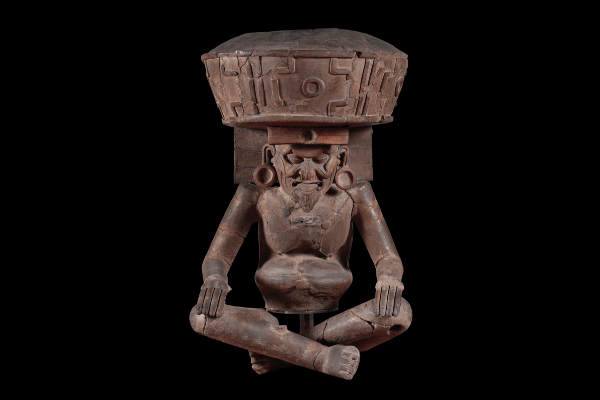Huehueteotl, the God of Fire of The Earth
Huehuetéotl is a sculpture of the old god of fire represented in the manner shown in the Central Highlands, where it originated. In the head it sustains a brazier that takes carved designs in crosses with a circle inside it, alluding to the four directions of the universe.





